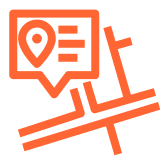29 May 2024
On the Front Lines: The Hidden Dangers Faced by Roadside Assistance Workers
Tags:

The narrative of work zone safety is changing. Historically, the data capturing work zone fatalities has been incomplete, often failing to account for the risks faced by Roadside Assistance Providers (RAPs) . These vital responders are frequently categorized merely as pedestrians in official reports, obscuring the true nature of their work-related hazards. Recognizing this gap, a recent AAA report illuminates the overlooked plight of RAPs and the need for more nuanced and protective measures on our nation’s highways.
Understanding the Scope of the Issue:
RAPs are the unsung guardians of our highways, offering essential services in often perilous conditions. However, the lack of specific data recognition puts them at a disadvantage. RAP fatalities are rising, with an identified 123 deaths from 2015-2021, marking a concerning trend in the increasing danger of work zones. Particularly alarming is that a majority of these incidents occur not within the expected confines of the road but after a driver has departed from the roadway, indicating a potential issue of impaired or distracted driving.
Enhanced Vision for Roadside Assistance Safety:
Addressing the critical need for improved safety of Roadside Assistance Providers (RAPs), Causeway one.network has deployed solution that promises a safer future for these crucial responders. Our vision centers around an ecosystem where the detection of a roadside issue immediately activates an alert through our Live Link solution.
Live Link is pivotal in this vision, enabling real-time updates to major navigation platforms such as Apple Maps, Google Maps, and Waze. This advanced functionality is essential for safeguarding RAPs. By rapidly disseminating road closure information to these platforms, traffic is efficiently rerouted away from the RAP’s location. This proactive approach significantly diminishes the risks of accidents involving RAPs and decreases the chances of secondary incidents near the initial roadside event.
Furthermore, with the integration of our Traffic Management solution, this system provides Transportation Systems Management and Operations (TSMO) and state DOT traffic operations with live, accurate insights into road conditions. This real-time data is crucial for effective decision-making and strategic planning, empowering traffic managers to adapt swiftly to changing road scenarios. The ability to dynamically manage traffic flow, deploy resources as needed, and relay timely public information collectively fosters a safer, more streamlined roadway environment.
Case Study – Florida’s Pioneering Road Safety Efforts:
In a collaborative effort with Causeway one.network, the Florida Department of Transportation has demonstrated a commitment to maximizing road safety. Utilizing our Live Link technology in their Lane Closure Notification System (LCNS), notable achievements include:
- Over 35,000 closures processed within a year. 99% confirmation and transmission rate to navigation providers.
- 87% of closures confirmed on navigation providers within five minutes of reporting.
- Over half of the closures promptly reopened using the Causeway one.network application, maintaining continuous driver vigilance.
While FDOT’s program was not specifically to enhance RAP safety, its success serves as a compelling proof of concept. The technology not only exists but has been deployed on a large scale. This deployment demonstrates the potential for integrating such technology in various contexts to significantly improve safety. Dont just take our word for it though;
Expanding communications technology is going to be key to saving lives in work zones and out on our roadways. Live Link gives our members a way to tell drivers to slow down and be extra diligent when they enter a work zone. These construction zones are their office and for the first time, we’re giving them a real-time voice in their own safety. – Ananth Prasad, President, FTBA
The Future of Traffic Management:
The AAA report’s recommendations align seamlessly with Causeway one.network’s capabilities. It emphasizes the need for targeted countermeasures on high-speed, limited-access highways—where 68% of RAP struck-by deaths have occurred. Our technology not only meets these recommendations but also expands upon them, offering a forward-thinking blueprint for DOTs nationwide. Causeway one.network stands at the forefront of this initiative, ready to partner with state DOTs to usher in a new era of roadside safety. By prioritizing early detection, clear communication, and strategic training, we can protect those who serve as the backbone of our roadway infrastructure.
To redefine the safety protocols within your jurisdiction and to be a part of this life-saving transformation, we invite you to reach out and schedule a meeting with us. Together, we can pave the way for a safer tomorrow on our roads.


